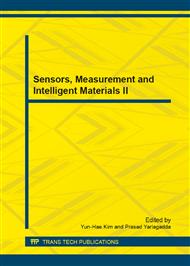p.379
p.383
p.388
p.394
p.401
p.405
p.411
p.415
p.419
Simulation of Registration Accuracy of Iterative Closest Point (ICP) Method for Pose Estimation
Abstract:
ICP method is a powerful tool widely used in 3D point registration and pose estimation application. But there lacks an deterministic relation between the 3D point dataset and the model. Here we present some Monte Carlo simulation results for pose estimation error of one degree and the system requirement for lidar 3D point measurement techniques.
Info:
Periodical:
Pages:
401-404
Citation:
Online since:
December 2013
Authors:
Price:
Сopyright:
© 2014 Trans Tech Publications Ltd. All Rights Reserved
Share:
Citation:


